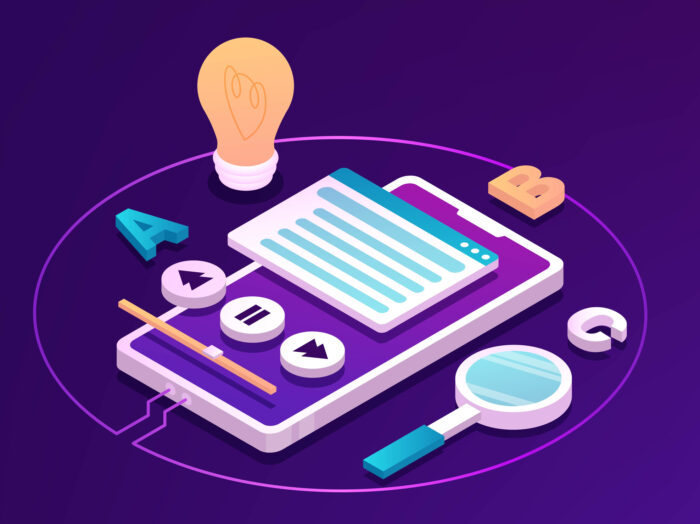When running a business, it’s easy to forget that not everyone learns in the same way. But if you want your training programmes to work, it’s crucial to understand how different people learn best.
This article will guide you through a range of learning models that can help make your training more effective.
What is a Learning Model?
A learning model is a set of guidelines that helps educators determine the best way to teach people new skills or knowledge.
Learning models are based on theories and research that explore how people learn. These models can range from simple categorisations of learning styles, such as the VARK model, to more complex frameworks that consider cognitive processes, like the Herrmann Brain Dominance Instrument (HBDI). They often identify different types of learners and offer strategies for engaging them effectively.
Understanding different learning models can be hugely supportive to the creation of business training and development programmes. When learners receive models customised to their own preferences, they are more engaged and absorb new information more effectively.
This experience is not limited to employees; it can also extend to customers, particularly when considering user guides, FAQs, and other support resources.
8 Useful Learning Models
The following models are key frameworks for understanding and categorising how individuals learn and process information.
1.’VARK’ Learning Model
The VARK Learning Model is a popular learning style model that identifies four main types of learners: Visual, Auditory, Reading/Writing, and Kinesthetic.
- Visual learners understand best when they see information. They learn best through diagrams, charts, graphs, and other visual aids.
- Auditory learners learn best through listening. They learn best through lectures, discussions, and podcasts.
- Reading/writing learners prefer to read or write down information. They learn best through manuals, reports, and lists.
- Kinesthetic learners learn best by doing or experiencing something. They learn best through hands-on activities, experiments, and fieldwork.
Understanding these learning types can help make your training programs more effective in a business setting. For example, you can:
- Use a variety of teaching methods to appeal to all types of learners. For example, you could use visual aids, such as PowerPoint slides or videos, for visual learners, lectures and discussions for auditory learners; and hands-on activities for kinesthetic learners.
- Allow learners to choose their preferred learning style. For example, you could provide learners with the option to read a manual or watch a video to learn a new skill.
- Group learners together based on their learning styles. This can help to create a more supportive and productive learning environment.
2. Herrmann Brain Dominance Instrument (HBDI)
The Herrmann Brain Dominance Instrument (HBDI) is a psychometric assessment tool that measures and describes thinking preferences. It was developed by Ned Herrmann in the 1970s and has been used by millions of people around the world.
The HBDI divides the brain into four quadrants, each representing a different thinking preference:
- Analytical Thinkers: These individuals prefer logical reasoning and quantitative analysis. They are often good at problem-solving and making data-driven decisions.
- Practical Thinkers: These people focus on the “how-tos” and are usually very organised. They like procedures, plans, and timelines.
- Relational Thinkers: This group is highly empathetic and excels in social interaction. They are often great at teamwork and can understand different perspectives.
- Experimental Thinkers: These individuals are imaginative and like to explore multiple possibilities. They often enjoy brainstorming and are open to unconventional solutions.
For business leaders, understanding the HBDI model can be invaluable in team formation and leadership. For example, a project may benefit from a mix of analytical and experimental thinkers, balancing data-driven decision-making with creative problem-solving.
The model can also influence training material design. Analytical thinkers might appreciate modules filled with facts, statistics, and logical reasoning, while relational thinkers may prefer group activities or discussions.
3. ‘Felder-Silverman’ Learning Style
The Felder-Silverman model, developed by Richard Felder and Linda Silverman, offers a more complex approach to understanding learning styles by considering multiple dimensions of learning.
This model identifies five primary dimensions:
- Active vs. Reflective: Active learners prefer to dive in and try things out, while reflective learners like to think things through before taking action.
- Sensing vs. Intuitive: Sensing learners enjoy facts and established methods, whereas intuitive learners prefer concepts and abstract ideas.
- Visual vs. Verbal: This dimension mirrors the Visual and Reading/Writing categories from the VARK model, focusing on preference for visual or textual information.
- Sequential vs Global: Sequential learners benefit from step-by-step instructions and a linear learning path, while global learners like to see the bigger picture first and fill in details later.
- Inductive vs. Deductive: Inductive learners prefer to gather specific examples and draw a general conclusion, while deductive learners start with general principles and apply them to particular cases.
Businesses can employ the Felder-Silverman model as a diagnostic tool to figure out the learning styles within a team. This information could then impact training materials or the implementation of a new software system. For example, if your team is predominantly filled with active and sensing learners, then a hands-on, fact-based training approach would likely be most effective.
4. Gregorc’s ‘Mind Styles’ Learning Model
The Gregorc’s Mind Styles model, created by Anthony Gregorc, focuses on how people perceive and order new information. It identifies four different mind styles:
- Concrete Sequential: These individuals appreciate a logical flow and concrete details. They like following established steps and procedures.
- Abstract Sequential: This group prefers dealing with theoretical concepts and enjoys systematic thinking, albeit in a more abstract realm than their concrete counterparts.
- Concrete Random: These learners are hands-on and practical, but they prefer tackling problems in a random, trial-and-error manner rather than following a set sequence.
- Abstract Random: These individuals are intuitive and thrive in unstructured environments. They can connect disparate ideas and appreciate abstract thought, yet they prefer to approach tasks randomly.
Once you’ve sorted your team accordingly, you can ensure any additional training lands with the maximum impact. For example, if a significant portion of your team falls into the Concrete Sequential category, then traditional training modules with step-by-step guidelines may be the most effective.
5. 4MAT Model
The 4MAT system, developed by Bernice McCarthy, offers a comprehensive framework that combines elements of many other learning models. It proposes that learning occurs in a cycle comprising four major steps:
- Why: This step involves understanding the purpose and significance of what’s being learned. It appeals to learners who seek personal meaning in their learning experiences.
- What: In this phase, the focus is on acquiring new information. This is where factual content, rules, and guidelines are introduced.
- How: This stage is concerned with the application of knowledge. Learners get to put what they’ve learned into practice through activities and exercises.
- What if: This final stage is aimed at innovative thinkers. It encourages learners to adapt and modify their learning to new situations.
For business leaders, the 4MAT model can be a powerful tool for developing genuinely effective training programs. For instance, a training module might begin with an introduction explaining why the skills being taught are essential, followed by a detailed explanation of what those skills are, exercises to practise how to use them, and finally, scenarios to explore what-if situations.
In customer support and user training, the 4MAT model can help develop resources that cater to different stages of learning. For instance, a tutorial could start by explaining why a specific feature is important, describe what it does, demonstrate how to use it, and offer ideas on what else could be done with it.
6. Honey and Mumford Learning Style
The Honey and Mumford Learning Style model, developed by Peter Honey and Alan Mumford, categorises learners into four types based on their preferred approach to learning:
- Activists: These individuals enjoy new experiences and are open to challenges. They often learn by doing and enjoy being fully immersed in new situations.
- Reflectors: These learners prefer to observe and think about situations from different angles before coming to any conclusions. They like to collect data and ponder over it.
- Theorists: These individuals prefer to understand the theory behind their actions. They need models, facts, and statistics to engage with the learning process fully.
- Pragmatists: These are the practical learners who want to know how to apply the knowledge in the real world. They are keen on trying out ideas to see if they work in practice.
Incorporating the Honey and Mumford Learning Style might mean you recognise one staff member as ‘an Activist’, who might benefit from on-the-job training, while a ‘Theorist’ will prefer a more structured, classroom-style setting.
7. Dunn and Dunn Model
The Dunn and Dunn Model, formulated by Rita and Kenneth Dunn, posits that learning preferences can be categorised into five broad areas: environmental, emotional, sociological, physiological, and psychological.
This model takes a holistic approach that considers various factors affecting an individual’s capacity to learn.These are:
- Environmental: This dimension looks at elements like lighting, temperature, and sound, examining how they influence a person’s ability to focus and learn effectively.
- Emotional: This category considers factors such as motivation, persistence, and need for structure, exploring how they contribute to one’s learning experience.
- Sociological: This focuses on the social aspects of learning, such as the preference for working alone, in pairs, or in groups, and how this affects one’s ability to absorb information.
- Physiological: This considers individual preferences related to time of day, food and drink intake, and mobility, aiming to understand how these elements can affect learning.
- Psychological: This final category assesses cognitive styles like global or analytical thinking, impulsive or reflective response patterns, and how these influence the learning process.
The Dunn and Dunn Model supports creating tailored training programs in a business context. For instance, you may find that some employees are more productive in a quiet environment, while others thrive in a collaborative setting.
8. Multiple Intelligences Model
The Multiple Intelligences Model, conceived by Howard Gardner, asserts that intelligence is not a monolithic trait but is instead comprised of various distinct types. These include linguistic, logical-mathematical, musical, bodily-kinesthetic, spatial, interpersonal, intrapersonal, and naturalist intelligences.
- Linguistic: Individuals with strength in this area excel in reading, writing, and verbal communication.
- Logical-Mathematical: These people are adept at reasoning, problem-solving, and mathematical thinking.
- Musical: This type pertains to rhythm, music, and hearing, with individuals often displaying a knack for musical composition or performance.
- Bodily-Kinesthetic: Individuals with this intelligence have a strong sense of body awareness and are good at tasks requiring manual dexterity or physical coordination.
- Spatial: These people excel at visualising spaces and shapes, often excelling in architecture or design.
- Interpersonal: Individuals with this type of intelligence understand others’ emotions and motivations, often making them excellent team players or leaders.
- Intrapersonal: This involves deeply understanding oneself, one’s emotions, goals, and motivations.
- Naturalist: People with this intelligence are inclined to understand patterns in nature and are often drawn to subjects like biology or environmental science.
For instance, if you identify that a segment of your team has strong logical-mathematical intelligence, you might opt for problem-solving activities and quantitative tasks during training sessions. Conversely, those with high interpersonal intelligence might excel in team-building activities or customer service roles.
When applied to customer service, the Multiple Intelligences Model might suggest that a video demonstration is the right solution for a customer with spatial intelligence, while a detailed user guide could be more effective for someone with linguistic intelligence.
What is the Most Effective Learning Model?
Of course, the best learning model for you will depend on your individual learning style, the objectives of your training, and the nature of the material being taught.
In a corporate environment, you might find that specific models are more suited for technical training, while others excel in fostering interpersonal skills. For instance, the Dunn and Dunn Model, with its focus on individual learning preferences, may be particularly useful for a diverse workforce. On the other hand, the Multiple Intelligences Model could be beneficial in roles requiring specialised skills, such as sales or data analysis.
These are frameworks rather than hard and fast rules and designed to offer a perspective on human behaviour that improves efficiency and effectiveness. Ultimately, most modern training programs use elements from multiple learning models to create a hybrid approach.
Whatever model you choose, a digital adoption platform like Omniplex Guide can help you implement these principles directly into your business environment, both for employee training and customer support.
If you’d like to know how Omniplex Guide can help your team, get in touch or book a free product tour.




